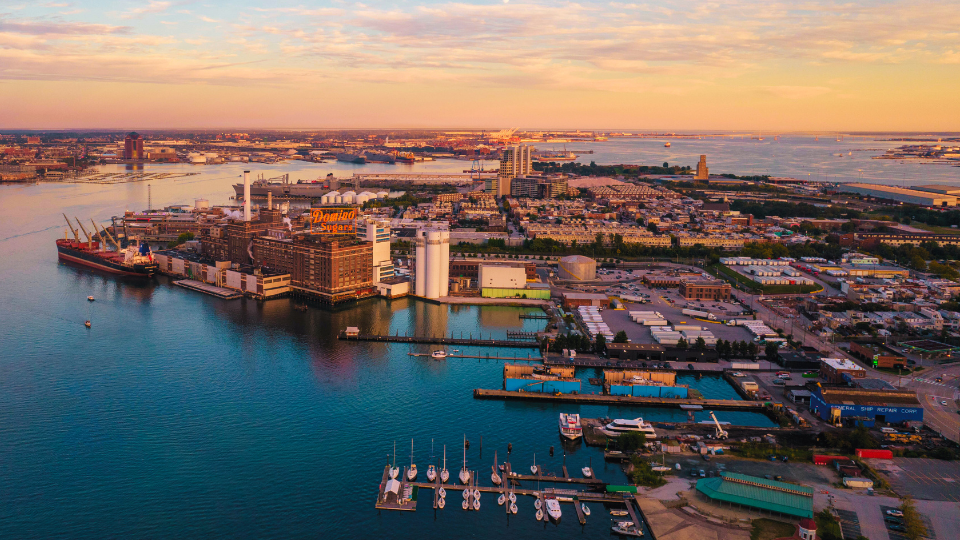March 26, 2024, started as an ordinary night in Baltimore. As the city slept, the Dali, a 984.3-foot-long cargo vessel, completely lost power, plunged into darkness, and crashed into the Francis Scott Key Bridge, causing its collapse. When the world awoke to the news, it became clear this was no ordinary incident causing traffic jams and detours. The Baltimore bridge collapse was a catastrophe.
Outside of the human toll, the Baltimore bridge collapse threw transportation networks into turmoil, touched every corner of the East Coast’s supply chains, and stretched thin the threads that hold our global trade fabric together. Many don’t realize the importance of the Port of Baltimore, which is expected to reopen by the end of May.
The port leads the U.S. in the volume of autos, light trucks, roll-on/roll-off machinery, and imports of sugar and gypsum. It also ranks ninth for foreign cargo volume and value among major American ports, processing 52.3 million tons of foreign cargo valued at nearly $81 billion in 2023.
Quantifying the Supply Chain Impacts
Direct Consequences
The fallout from the Francis Scott Key Bridge collapse was immediate. Maritime traffic to and from the Port of Baltimore ground to a halt. Vehicular routes, particularly along Interstate 695, faced abrupt redirections. Of course, the consequences were a headache for daily commuters. However, the effects were even more severe for regional transportation networks thanks to the resulting bottlenecks.
Shipping schedules have spiraled into chaos, with delivery timelines for Baltimore-bound vessels now stretched by at least 24 days. With an average of 4,900 trucks, representing $28 billion in goods annually, forced onto alternative routes, the ripple effects could elevate shipping costs and, by extension, consumer prices.
Broader Implications
We continue to deal with the fallout of the bridge collapse as debris continues to obstruct the port. Not only does it threaten the livelihood of approximately 15,000 workers and $4.7 billion in economic contributions to Maryland, but it also challenges the very face of our logistics networks and national supply chain.
Companies accustomed to lean inventory practices now face a dilemma: balancing the need to stockpile against escalating costs brought on by detours to alternate ports like Norfolk and New Jersey. Consider the automotive sector.
We discussed earlier how important the port is for this industry, but let’s add more context. The port handled 847,158 vehicles in 2023. Brands like Ford, General Motors, Toyota, Mazda, Nissan, Mitsubishi, Mercedes-Benz, and BMW operated from the port.
Retail, too, will feel the brunt as rerouting and delays inflate operational costs, potentially hiking prices for end consumers.
Strategies for Mitigation
The Key Bridge collapse is a scenario that tests the mettle of even the most experienced logistics pro out there. Bridges don’t just disappear every day. However, anything can happen in logistics, which illustrates the importance of shipment and order visibility, as well as agility in the face of disruptions.
Shipment and Order Visibility
When disaster strikes, like a bridge suddenly out of service, the scramble begins not just on the roads but behind the scenes in the complex world of supply chains. Yet only a quarter of suppliers have embraced real-time shipment tracking, despite nearly three-quarters of industry pros marking it as essential. Imagine the chaos of the Baltimore bridge collapse without eyes on every moving part. Without those vital updates, companies and their customers are in the dark.
Tools like MercuryGate’s Transportation Management System (TMS) were built for disruptions like this. Not only does it help keep track of where everything is, it predicts, reroutes, and communicates.
Let’s go back a few weeks to the actual Key Bridge incident. Picture a truck with vital cargo onboard, suddenly in the middle of this generational bottleneck. A TMS like MercuryGate’s with dynamic rerouting capabilities could have it on a new route with a few clicks and easily avoid the collapsed bridge. The company knows what’s happening instantly, and the customer? They’re not left waiting and wondering. They’re updated and reassured because the company has the tools to keep them in the loop. After all, a retail chain achieved more than $1.5 million in savings through improved route optimization using MercuryGate’s solutions.
Enhancing Supply Chain Agility
Facing unexpected disruptions head-on means forging supply chains that don’t just endure but adapt and thrive. Think beyond the basics, like holding extra stock or having a spare manufacturing site — those are starting points. Still, the real game-changer is a mindset that embraces diversification, not just as a strategy but as an essential business practice.
With nearly 80% of companies branching out their supplier networks, the trend is clear: resilience isn’t optional. It’s about making smarter, faster decisions with the help of predictive analytics so that your supply chain isn’t just reactive but proactive.
MercuryGate shines here with a toolkit designed for this very agility. Imagine a unified system that tracks every move and anticipates the next, thanks to AI and IoT integration. It’s about transforming visibility into action, turning potential disruptions into mere blips on the radar.
Calculate your potential Saving While Using an enterprise TMS
Resilience Redefined: Steering Through Supply Chain Storms
But you also need to think ahead. Don’t wait for the next disruption to reveal the cracks in your supply chain. Demo MercuryGate’s innovative solutions today and see how we can make your supply chain resilient and ahead of the game.


